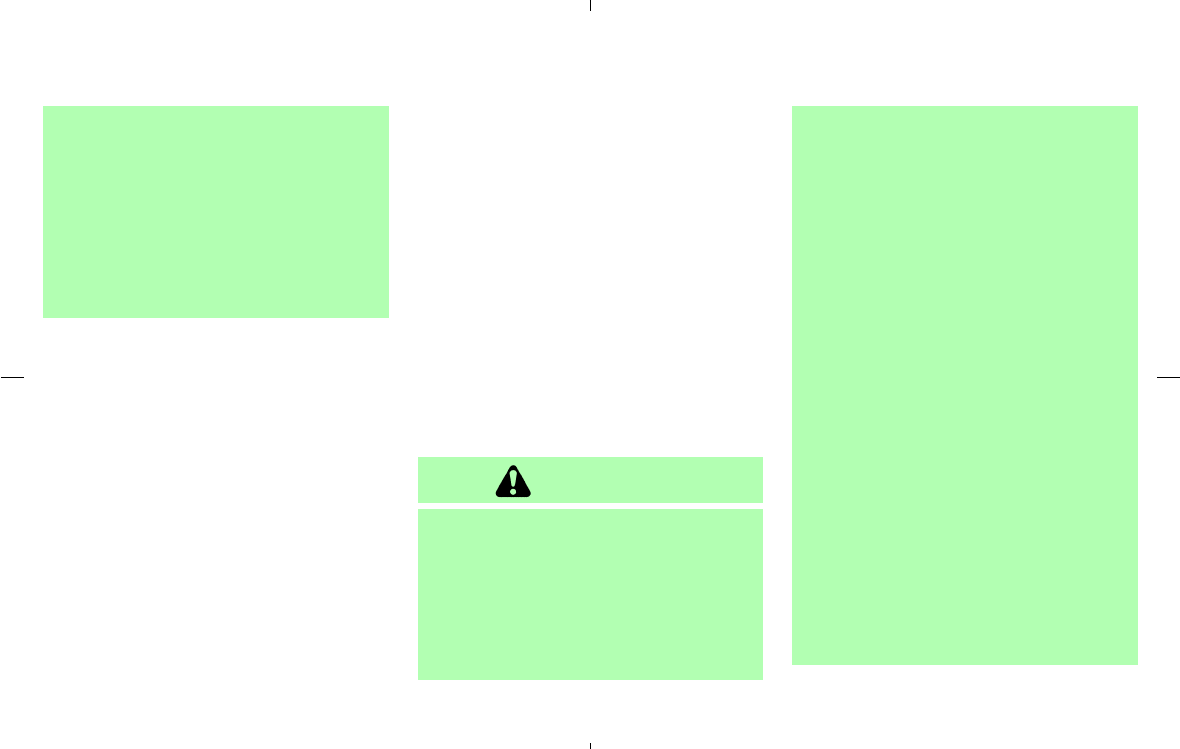
¼ NISSAN recommends that the child
restraint be installed in the rear seat.
According to accident statistics, chil-
dren are safer when properly re-
strained in the rear seat than in the
front seat.
¼ An improperly installed child re-
straint could lead to serious injury or
death in an accident.
In general, child restraints are designed to be
installed with the lap portion of a three-point type
seat belt. In addition, this vehicle is equipped
with a universal child restraint lower anchor
system, referred to as the LATCH (Lower An-
chors and Tethers for CHildren) system. Some
child restraints include two rigid or webbing-
mounted attachments that can be connected to
these lower anchors. For details, see “LATCH
(Lower Anchors and Tethers for CHildren) SYS-
TEM” later in this section.
Child restraints for infants and children of various
sizes are offered by several manufacturers.
When selecting any child restraint, keep the
following points in mind:
¼ choose only a restraint with a label certifying
that it complies with Federal Motor Vehicle
Safety Standard 213 or Canadian Motor
Vehicle Safety Standard 213.
¼ check the child restraint in your vehicle to be
sure it is compatible with the vehicle’s seat
and seat belt system.
¼ if the child restraint is compatible with your
vehicle, place your child in the child restraint
and check the various adjustments to be sure
the child restraint is compatible with your
child. Always follow all recommended proce-
dures.
All US states and Canadian provinces re-
quire that infants and small children be
restrained in approved child restraints at
all times while the vehicle is being oper-
ated.
WARNING
¼ Improper use of a child restraint can
result in increased injuries for both
the infant or child and other occu-
pants in the vehicle.
¼ Follow all of the child restraint manu-
facturer’s instructions for installation
and use. When purchasing a child
restraint, be sure to select one which
will fit your child and vehicle. It may
not be possible to properly install
some types of child restraints in your
vehicle.
¼ If the child restraint is not anchored
properly, the risk of a child being
injured in a collision or a sudden stop
greatly increases.
¼ Adjustable seatbacks should be po-
sitioned to fit the child restraint, but
as upright as possible.
¼ After attaching the child restraint,
test it before you place the child in it.
Tilt it from side to side. Try to tug it
forward and check to see if the belt
holds the restraint in place. The child
restraint should not move more than
1 inch (25 mm). If the restraint is not
secure, tighten the belt as necessary,
or put the restraint in another seat
and test it again.
¼ For a front facing child restraint,
check to make sure the shoulder belt
does not go in front of the child’s face
Seats, restraints and supplemental air bag systems 1-33
੬ 04.4.5/Z50-D/V5.0 ੭


















